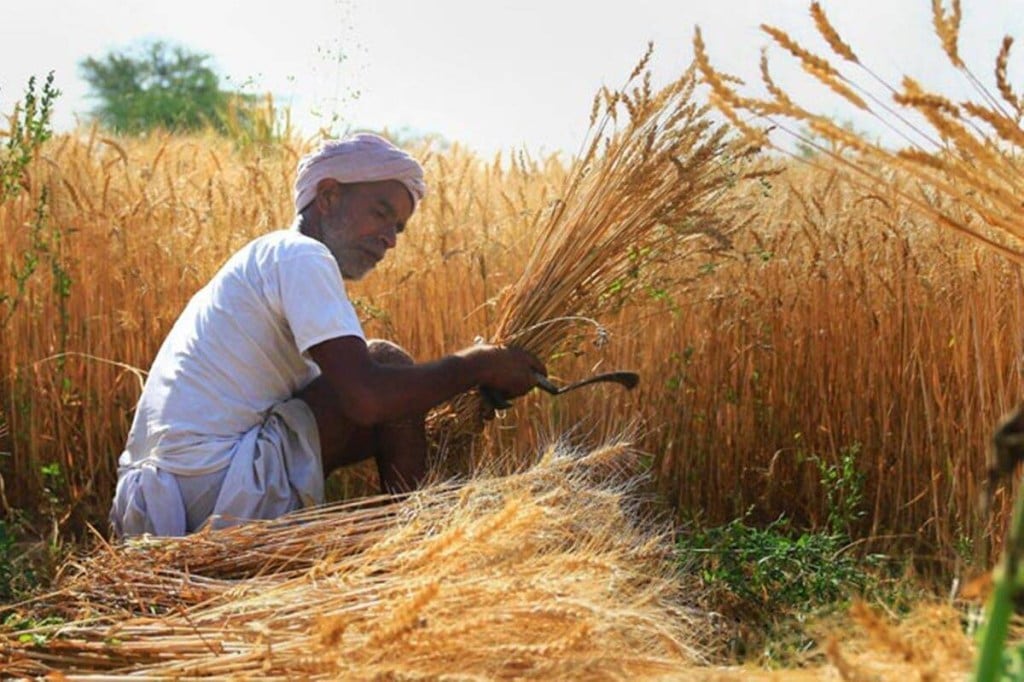After transferring more than Rs 33,000 crore to bank accounts of farmers in Punjab and Haryana in the ongoing wheat procurement season, the Centre has said the transition to direct benefit transfer (DBT) from the earlier practice of routing it through arhatiyas (commission agents) has been smooth in the two states.
Procurement of wheat has also progressed well despite the second wave of Covid-19. The Centre has reached the target of 21 million tonne (MT) a fortnight before the closure of the official purchase in Punjab and Haryana, the epicentres of the farmers’ agitation.
“Change (to DBT mode) was smoother and beyond our expectations,” food secretary Sudhanshu Pandey said on Monday while briefing reporters about procurement of wheat and implementation of the “one nation, one ration card” scheme. He said farmers were happy receiving the money directly in their accounts, even though there is a lag of 48-72 hours between when they bring the grains and receive the payment.
Wheat procurement in the ongoing season has reached 33.8 MT as of May 9, which is 36% higher than year-ago period and close to 80% of this season’s total target. As procurement in Madhya Pradesh has been lower at 9.5 MT compared with Punjab, despite a higher target at 13.5 MT, Pandey said the purchases in MP will continue till June 15. Uttar Pradesh is also on course to achieve its target of 5.5 MT (actual is 2 MT so far), he said. Punjab, Haryana, UP and MP together comprise over 90% of wheat production.
Speaking about the government’s open-ended procurement policy, the food secretary said nearly two-third of the annual procurement of rice and wheat is used under various schemes, including the National Food Security Act (NFSA), leaving a huge surplus every year. “A long-term solution is required to manage the surplus. Discussion is happening among various ministries on this issue keeping in mind an annual outgo of foreign exchange worth Rs 1 lakh crore on import of edible oils and pulses,” Pandey said.
Commenting on the recent spurt in edible oil prices, he said rates would soften following the release of imported stock that was stuck at ports due to clearance issues. Retail price of palm oil has risen by 52% to Rs 132.6/kg, soya oil by 37% to Rs 132.6/kg and mustard oil by 49% to Rs 163.5/kg as on May 8 from the year-ago period.
The food secretary also expressed confidence in achieving the 10% ethanol blending (with petrol) target next year, while it could be around 8.5% in the current season ending November 30. The country has achieved an overall 7.4% ethanol blending so far, while 11 sugar producing states and adjoining states have already touched 9.5-10% blending. Another five states are in the range of 8-10%. The Centre has been making efforts to increase the figure in states where blending levels are low.
The government has also fixed a mandatory export target of 6 MT of surplus sugar for the 2020-21 season (October-September) as per the policy announced in January. During the 2019-20 season, India, the world’s second-largest producer after Brazil, had exported 5.9 MT sugar. This year, more than 4.3 MT of sugar has already been despatched by mills for exports, while trade sources said 5.6 MT has been contracted. Major buyers of Indian sugar include Indonesia, Afghanistan and the UAE.

